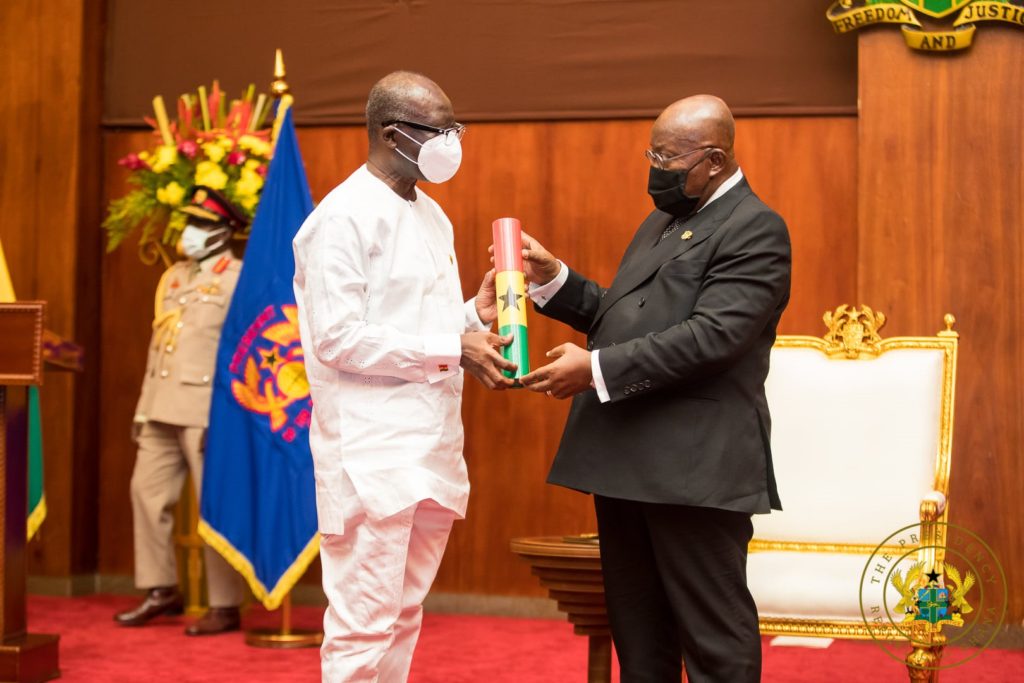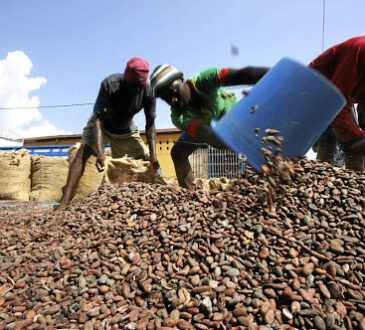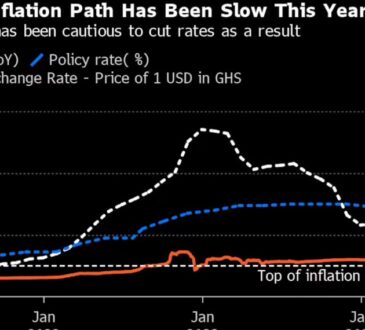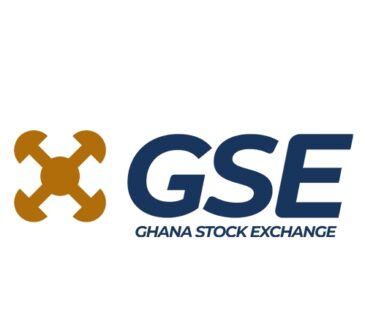
By Emmanuel Amoah-Darkwah
President Nana Akufo-Addo earlier this month directed the Fnance Minister, Ken Ofori-Atta to commence engagement with the International Monetary Fund (IMF) to address primarily the current Balance of Payment (BoP) challenges of the country.
The decision to engage the IMF was followed by fund’s team visit to Accra from 6th – 13th July led by Carlo Sdralevich, mission chief for Ghana, to begin initial discussions with the Ghanaian authorities for a possible IMF-supported program.
Government has reiterated its commitment to negotiate a good deal as the country faces two global shocks –Covid 19 pandemic and Russia-Ukraine War– which have exacerbated the structural domestic economic bottlenecks.
It is estimated that Ghana lost GH¢ 13.1 billion of revenue and had to increase expenditure by GH¢ 14.2 billion with combined fiscal impact of GH¢ 26 billion, representing 6.8percent of Gross Domestic Product (GDP), according to a statement after a cabinet retreat in March this year,
Public debt to GDP ratio has increased considerably from 54.2percent in 2017 to 61.2percent in 2019 to 74.4percent in 2020 and further to 76.6percent at the end of 2021.
Provisional data from the Bank of Ghana indicated that, public debt stock has reached GH¢ 387.9 billion, representing 77.2percent of GDP at the end of April, 2022.
Overall balance of payment deficit has worsened to US$934.5 million in the first quarter of 2022, compared with US$ 429.9 million in the same period last year. Inflation hit 18-year high at 27.6percent in May this year while Monetary Policy Rate (MPR) was increased by 200 basis point to 19percent to tame inflationary pressures.
To address these challenges, the Akufo-Addo-led administration announced a raft of measures in March to contain the ballooning expenditure while ensuring tax compliance.
This latest request comes at the back of IMF’s approval of the disbursement of US$ 1 billion drawn under the Rapid Credit Facility (RCF) in April this year.
The disbursement was to aid Ghana address the fiscal and balance of payment challenges, improve confidence and catalyse support from other development partners. RCF is available to low-income countries and carries a zero-interest rate.
RCF has a grace period of 5½ years and a final maturity of 10 years. IMF’s Article IV consultations with Ghana in July, 2021 posited that, the ongoing recovery from the pandemic is threatened by possible new waves and rising debt vulnerabilities, including large financing needs that leave government exposed to rollover and solvency risks. This has been heightened by the crisis in Ukraine which has led to supply chain disruptions, skyrocketing food prices and limited access to the international capital market.
Comparative analysis
It is important to highlight how the Fund has used Special Drawing Rights (SDR) to address the balance of payment challenges in member states. SDR is an international reserve asset created by the IMF to supplement the official reserves of its member countries-currently 190. It is a potential claim on the freely usable currencies of IMF members. As such, SDRs can provide a country with liquidity. What is Ghana’s current Special Drawing Rights (SDR) position at the Fund?
According to the IMF, Ghana’s SDR as at 7th July, 2022 stood at 671.34 million with a quota of 738.0 million. As Ghana commences negotiations with the Fund, what could possibly be the value of the financial assistance from the IMF?
Government has hinted of its expectation of getting between US$ 2- 3billion in BoP support. These are early days of the negotiations as Ghana is at the data sharing stage with the Fund for a possible stabilization program.
How has the IMF resolved BoP challenges in other countries in recent times?
On 2nd April, 2021, the IMF Board approved SDR 1.655 billion (about US$2.34 billion) Extended Credit Facility (ECF) and Extended Fund Facility (EFF) arrangements for Kenya. The three-year financing package will support the next phase of the authorities’ COVID-19 response and their plan to reduce debt vulnerabilities while safeguarding resources to protect vulnerable groups. Kenya currently has SDR of 489.08 million with a quota of 542.8 million.
Similar to the aforementioned, on 12th December, 2016, the IMF Executive Board approved a three-year ECF/EFF arrangements with a total access of SDR 650.4 million (about US$896.7 million) which was extended by one year on December 6, 2019 for Cote d’Ivoire. It was augmented by about US$278.2 million. Cote d’Ivoire currently has SDR of 1634.95 million with a quota of 650.4 million.
More so, on 7th June, 2021, IMF Board approved SDR 453 million (about US$650 million or CFAF 350 billion) Stand-by arrangement and arrangement under the Standby Credit Facility for Senegal and completed the third review under the Policy Coordination Instrument. The 18-month arrangements together with the Policy Coordination Instrument will provide a policy anchor for the next phase of the authorities’ COVID-19 response and support a strong and job-rich recovery. At present, Senegal has SDR of 884.89 million with a quota of 323.6 million.
It is safe to predict that, Ghana could secure an ECF or EFF program from the Fund because of the current broad macroeconomic challenges and more importantly debt vulnerabilities. The ECF is a lending arrangement that provides sustained program engagement over the medium to long term in case of protracted balance of payments problems. On the other hand, the EFF was established to provide assistance to countries: (i) experiencing serious payments imbalances because of structural impediments; or (ii) characterized by slow growth and an inherently weak balance of payments position.
Ghana’s ECF Program in 2015
On 3rd April, 2015, the Executive Board of the International Monetary Fund (IMF) approved a three-year arrangement under the Extended Credit Facility (ECF) for Ghana in an amount equivalent to SDR 664.20 million (180 percent of quota or about US$918 million) in support of the authorities’ medium-term economic reform program. The program aimed to restore macroeconomic stability, debt sustainability and to foster a return to high growth and job creation, while protecting social spending. The main pillars of the program were:
1. To achieve sizeable and frontloaded fiscal adjustment, to restore debt sustainability, to contain expenditures through wage restraint and limited net hiring, as well as on measures to mobilise additional revenues;
2. To embark on structural reforms to strengthen public finances and fiscal discipline by improving budget transparency, cleaning-up and controlling the payroll, right-sizing the civil service, and improving revenue collection;
3. To restore the effectiveness of the inflation targeting framework to help bring inflation back into single digit territory; and preserve financial sector stability.
4. To safeguard social and other priority spending under the program, including expanding the targeted social safety nets—such as the Livelihood Empowerment Against Poverty (LEAP) program. A similar program could be agreed on with the IMF after the ongoing negotiations.
Ghana’s bargaining chip
Government of Ghana has indicated that, it will be presenting its Enhanced Domestic Program (EDP) to serve as an anchor program at the negotiation table. The EDP is a 3-year fast-tracked macroeconomic stabilization program that seeks to restore investor confidence and achieve fiscal and debt sustainability. The program is heavily driven by a mix of robust structural reforms and revenue, expenditure, and financing policies. This will further enhance the recovery and transformation efforts by the Government under the Ghana CARES ‘Obaatan pa’ Program. The main pillars are;
- Strengthen government’s effort to restore investor confidence in the economy, thereby, regaining market access, boosting Development Partner (DP) disbursements, and unlocking other financing sources;
- Restore debt sustainability and macroeconomic stability to support green growth, economic transformation and job creation while protecting social spending;
- Strengthen the Central Bank’s Monetary Policy Regime;
- Build buffers to strengthen resilience to economic shocks; and
- Further enhance the recovery and transformation efforts by the government under the Ghana CARES ‘Obaatan pa’ Program.
Broader consultations with sections of the populace by the Government of Ghana before commencement of negotiations with the IMF could have solidified Ghana’s position at the negotiation table. History is the best teacher. The IMF’s Structural Adjustment Program (SAP) in 1983 which spurred economic growth but at a social cost and the net freeze on employment and cut in other social expenditure between 2015-2019 during the implementation ECF program are good examples to inform government’s position as it engages the Fund.
To review or scratch?
As Ghana negotiates for a stabilization program, domestic pressures heightens. Agitations from the labor front are rife. Civil and Local Government Staff Association of Ghana (CLOSAG) in April, 2022 embarked on a strike to demand so-called ‘neutrality allowance’. On 4th July, 2022, Ghana National Association of Teachers (GNAT), National Association of Graduate Teachers (NAGRAT), Teachers and Educational Workers’ Union (TEWU) and Coalition of Concerned Teachers (CCT) declared a strike to demand 20% Cost-of-Living Allowance (COLA). A meeting between the Ministry of Employment and the striking unions ended inconclusively on 6th June, 2022. Other labor unions have hinted of similar industrial actions. In the 2022 Budget, government earmarked GH¢ 35.4 billion for compensation of government employees. This follows closely with interest payment allocation of GH¢ 37.4 billion. The tight fiscal space makes is difficult for government to fully accommodate the demands of labor.
On the other hand,flagship programs of the government which include, Free Senior High School Education, Planting for Food and Jobs, 1D1F etc have come up for discussion. Typical IMF stabilization programs comes with austerity measures which some sections of Ghanaians fear these programs might be reviewed or scratched despite government assurances.
In conclusion, as Ghana engages the IMF for the 18th stabilization program, Ghanaian authorities should negotiate in the best interest of Ghanaians with emphasis on social protection. The medium term prospects of the country are bright hence an IMF program should be anchored on securing prior micro and macroeconomic gains while dealing with the risk of fiscal slippages, ballooning debt and its accompanying interest payment.








